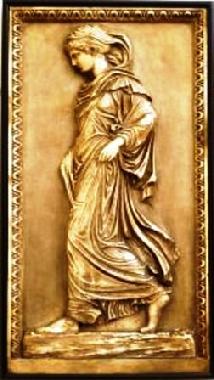| Kimberly (Kim) Immenhausen Kelly |
|
 |
| Motto/Muse "Stride forward" Gradiva (Latin, "The woman who walks") is a neo-Attic Roman bas-relief in the manner of Greek works of the fourth century BCE, depicting a robed woman who lifts the hems of her skirts to stride forward. The relief is in the Vatican Museums. |
|
|
Career Biography:
Kim resides in the northern suburbs of Chicago with her husband and business partner Bill. She has been a member of Society of American Mosaic Artists (SAMA) since 2011 and was elected to the Board of Trustees in 2017-2023. She has a Bachelor of Arts degree in Management & Business, with a concentration in Marketing and Art from Barat College; she is certified jointly in Appraisal Studies in Fine and Decorative Art by Northwestern University, and the American Society of Appraisers; she has been working full-time for over 35 years as a customer service professional, the last 29 as a business owner. As such, Kim has extensive experience and talent for identifying people’s needs and presenting appropriate products and services.
Personally, she gets pleasure from a lifelong love and study of Fine Decorative Arts, Antiques, and Theatre as she is currently working as an usher at the Marriott Theatre in Lincolnshire IL. She enjoys worldwide travel, walking, hiking, and bicycling.
Her fascination and involvement with mosaics and glass began as a student, when she took a New Trier East high school trip to Pompeii and Venice, and a goal of hers has long been to be supportive and work to enhance this ancient art form from the bottom up. Her desire to serve the mosaic community has grown over the years, and as a past SAMA board member she feels being actively involved worldwide helps build public interest and knowledge in the mosaic art form. Kim specializes in custom, fine and decorative art, bas-relief, and sculptural mosaics marketed under the Garden Dwellings’ name. Each piece is one of a kind, as it is in nature.
Specializing in: Custom, Mixed Media, & Sculptural Mosaics
Inspired By: The preservation and needs of flora and fauna, roadside attractions, landmarks, tourism, and the modes of travel along Historic Route 66; during its 60 years (1926-1985) of existence.
|
|